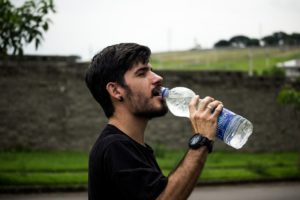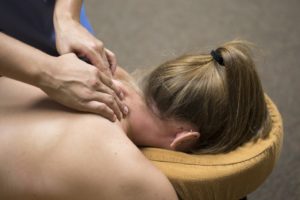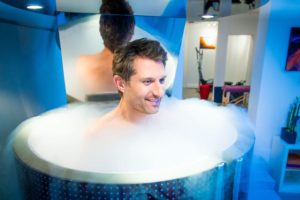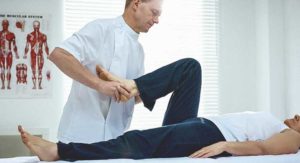A lot of individuals, young or old are now getting into more and more sporting activities. With the heightened era of boxing gyms, fun runs, marathons, mixed martial arts, different people of different ages have more access into being involved to strenuous sporting engagements.
When starting a desired activity, we are taught of getting to know the basics and learning how to prepare and manage our body.
A lot of professional high-profile athletes spends thousands of dollars preparing for their training, and spends almost double on their recovery. Training at a high level requires the optimal performance of our muscles, bones, heart and mind, that it needs equal if not even a more efficient way of preparation and recovery.
Below are top of mind processes and activities athletes should consider if performing at a high-level.
Getting enough sleep
 This is the most underrated step in a sportsperson regimen for healing their body after a workout. Allowing the body to pause and shut down for eight to twelve hours, enhances muscles to recuperate.
This is the most underrated step in a sportsperson regimen for healing their body after a workout. Allowing the body to pause and shut down for eight to twelve hours, enhances muscles to recuperate.
NBA Superstar Lebron James knows the importance of having at least twelve to fourteen hours of sleep to properly get himself ready for the next training day.
Sleeping resets our state allowing muscles to calm down and relax. For bodybuilders, getting ample rest, aids muscle gain. Studies also have shown that lack of sleep disturbs hormones in our body which results to loss in muscle mass.
Rehydration
 When competing and performing as elite athletes do, replenishing the lost electrolytes is critical. There are now an abundant of sports liquids that helps sports enthusiasts, not just pro sportsmen, refuel.
When competing and performing as elite athletes do, replenishing the lost electrolytes is critical. There are now an abundant of sports liquids that helps sports enthusiasts, not just pro sportsmen, refuel.
Dehydration can cause big problems with athletes. They may lead to muscle degeneration, accelerated fatigue, and increased susceptibility to heat-related illnesses, such as stroke. With the proper electrolytes as basic as water, sportspeople can withstand fatigue at least 37% more (https://www.webmd.com/diet/features/5-hydration-dos-and-donts#1).
Rigorous sporting activities takes a lot from the body and its nutrients. Not supplementing it back with fluids can be catastrophic to one’s general health. One major cause of kidney trouble among athletes is the lack of rehydration. As the body works hard to metabolize, different chemical reactions have to be addressed to achieve desired result of an activity. The kidney is a major player and right in the middle of all these chemical reactions in sporting activities. Maintaining proper fluid and electrolyte hydration reduces the risk of sports induced kidney illnesses.
Therapeutic massages
 Rigorous sporting activities builds up in our joints, neck, hips, lower back muscles, thighs, hamstrings, hands and more. Having a rub-down to release tension is essentials. Massages also improves the blood flow to affected and sore areas to fasten muscle recovery in athletes.
Rigorous sporting activities builds up in our joints, neck, hips, lower back muscles, thighs, hamstrings, hands and more. Having a rub-down to release tension is essentials. Massages also improves the blood flow to affected and sore areas to fasten muscle recovery in athletes.
There are different techniques and strokes that provides amazing results that gets our body back to its normal state.
- Effleurage is massage technique that uses light to moderate strokes to calm muscles up. Strokes are usually associate to the techniques used in Swedish massages. They can be long or short strokes using the palm of the hand. The push using the fingers starts from the lateral or away from the body towards back to the middle to encourage venous and lymphatic return to the heart.
- Petrissage or kneading is done by using the hand or the pads of the fingers to lift the tissues. Great technique after a run or a climb, since it can concentrate on both small and large muscle areas like the neck and the entire back muscles. This is very effective in maintaining the muscular position, improve cellular nutrition and to stimulate the nervous system. In this recovery technique, both hands are lifting, releasing and compressing the tissues.
- Tapotement is a karate chop-like movement movement that is applied across large muscles to stimulate muscle spindle activity. This technique seems to use striking hand tapping movement to the body surface with a consistent speed and pressure. The massage is perfect for the soles of the feet and for the calf muscles. A variation of this massage for the face is called tapping raindrops.
- Friction massage technique for sore muscles is done with open palms with a back and forth sliding movement to produce heat. This is also called, superficial warming. The technique is best for improving the state of sore muscles by artificially heating the surface to fasten the healing process. It also releases tender kinks in the muscle fibers. Best for big areas like the back and the legs.
Cryotherapy

High impact sports require elite athletes to find a more scientific way of recover faster, gain more muscle mass, reduce tenderness and inflammation in muscle and joints speedily. Using ice packs was norm when there’s an acute soreness in a strained muscle area. It has also been known that cold constricts blood vessels to help decrease swelling in worked up muscle groups.
Today, more and more athletes are finding cryotherapy a great way to heal their sore body post training. The cryo chamber is set to -117.8°C to -140°C and athletes have to stay inside for approximately 90 seconds (https://x1fuel.com/5-secret-recovery-methods-of-elite-athletes/?tkbl_expand=true). This triggers a systemic anti-inflammatory response in the body. In some sports like mixed martial arts, they are used to improve pain tolerance.
Oxygen therapy
 Another process that can accelerate recovery in athletes is the use of a Hyperbaric oxygen chamber, the therapy is more known as HBOT (hyperbaric oxygen therapy). It is a process where the body is saturated with oxygen to speed up the recovery process. Blood containing oxygen-rich cells, boosts healing by flushing sore muscle areas with lactic acid.
Another process that can accelerate recovery in athletes is the use of a Hyperbaric oxygen chamber, the therapy is more known as HBOT (hyperbaric oxygen therapy). It is a process where the body is saturated with oxygen to speed up the recovery process. Blood containing oxygen-rich cells, boosts healing by flushing sore muscle areas with lactic acid.
Also with this procedure, the body can get ATP or the adenosine triphosphate quickly which is very much needed for proper and speedy recuperation.
Alternative sports medicine
Traditional sports medicine for athletes usually involves doctors that specializes in movement, chemical reactions in the body or even its structure and functions. Other specialists basic theory and ancient knowledge heal individuals.
-

Courtesy of: Healthline Chiropractors are specializations that involves a study in the body’s bone structure. A lot of athletes suffer from broken hands, knee joints, back and the spine and the neck. These doctors have now penetrated the main steam to provide a different approach on how athletes can recover. By spine manipulation, chiropractors aids in the athlete’s optimal movements in the joints, neck and the spine. By releasing the seemingly locked spinal spaces, the athletes may feel instant freedom in movement. These specialists also restores functions into the athlete’s daily routines through the release in the bones and joints to improve range of motion.
- Acupuncture highlights the importance of the vital energy in the body, chi. Chi is believed to flow through our body and our active lifestyle tend to disrupt that flow. By using sterilized needles, practitioners pinpoints the pressure spots in the body, which is believed to be at least 2000, to restore the flow of chi. For athletes who are looking for a non-pharmacologic alternative to relieve pain, acupuncture is a sought after alternative. This is widely practiced with professional sports athletes today to alleviate pain, inflammation and to reduce consumption of pharmacologic options. When needles are inserted to the pressure acupuncture points, the body releases its natural pain-killing hormone, the endorphin. The treatment is very effective without the harmful side effects of drugs.
Even the best athletes in the world need the body to be restored. These techniques should help everyone perform at a high level while keeping their strength, normal range of motion and optimal health.
